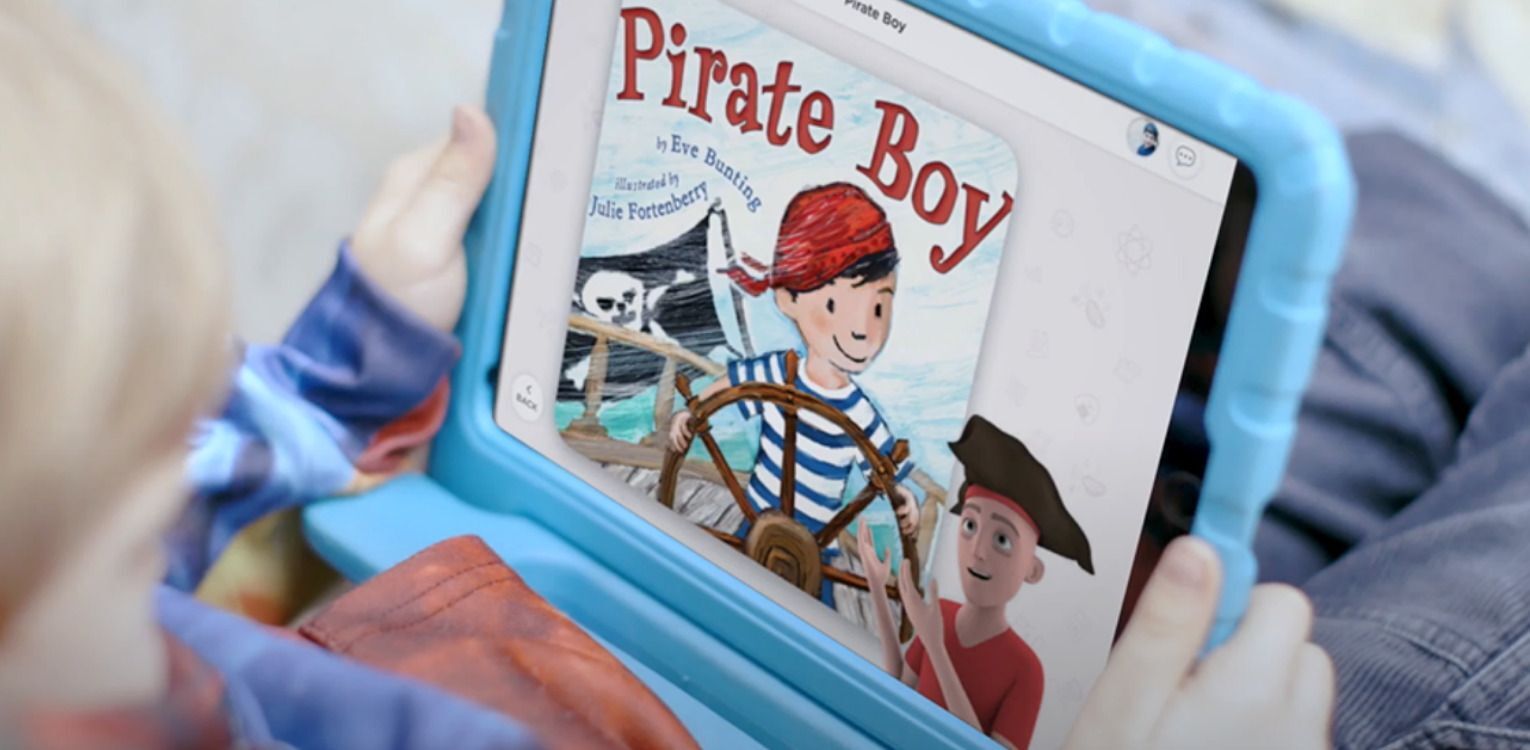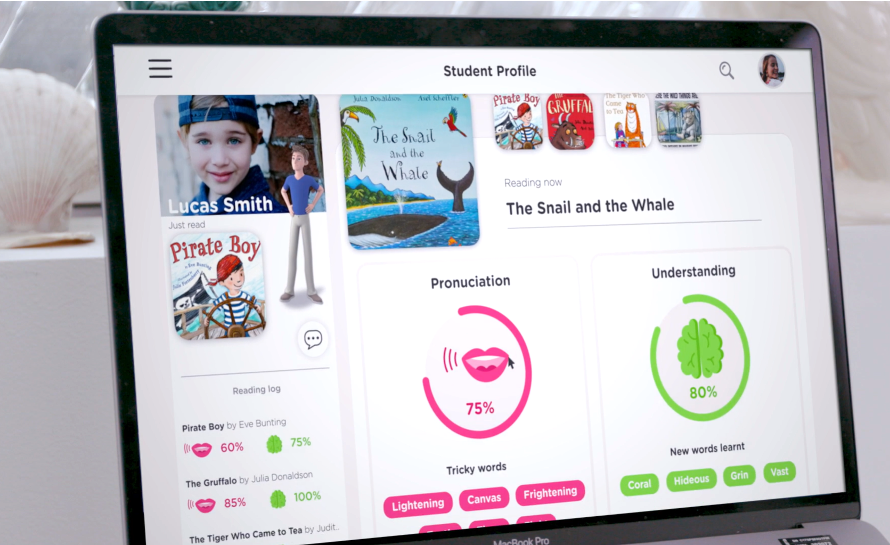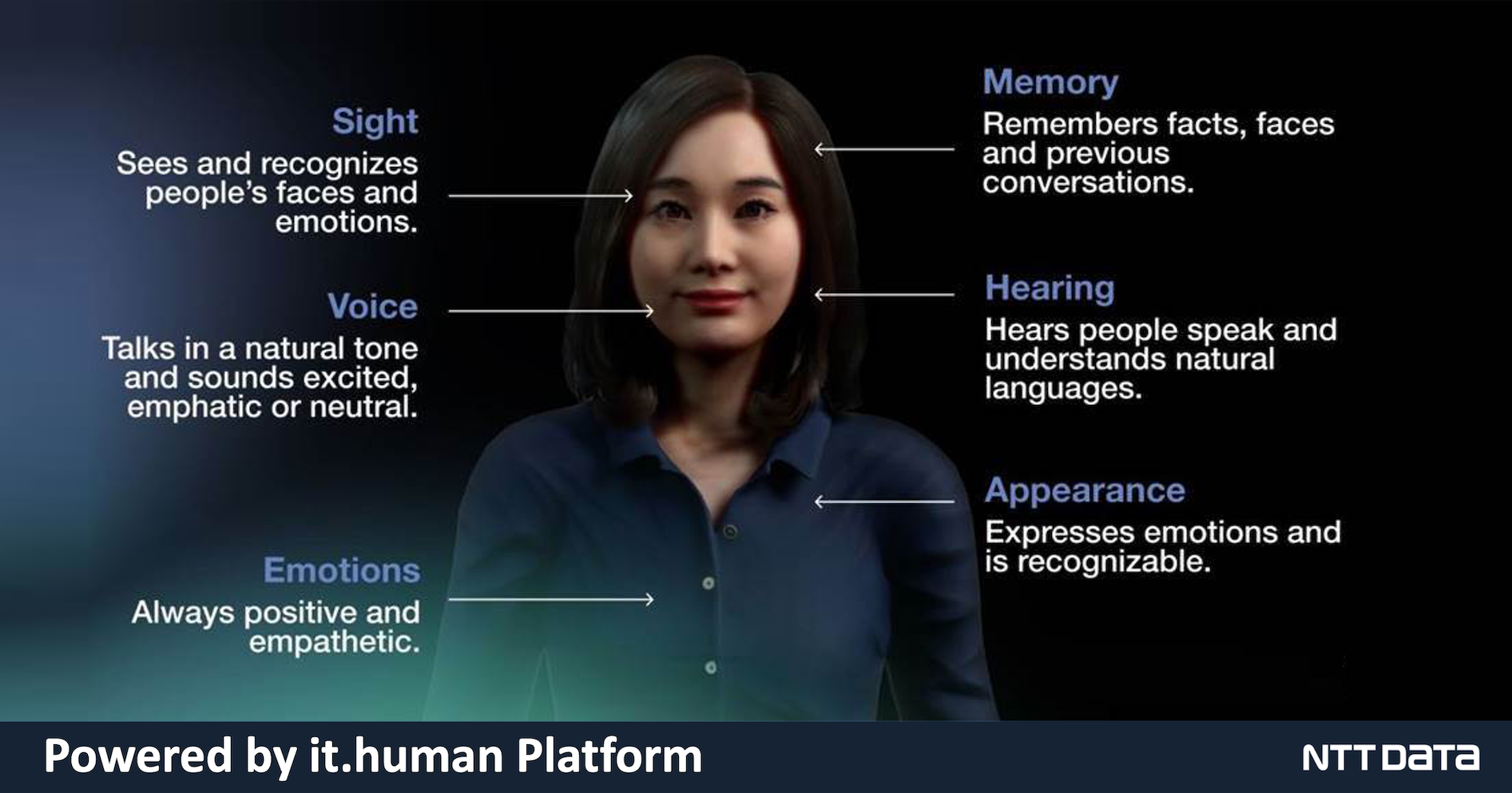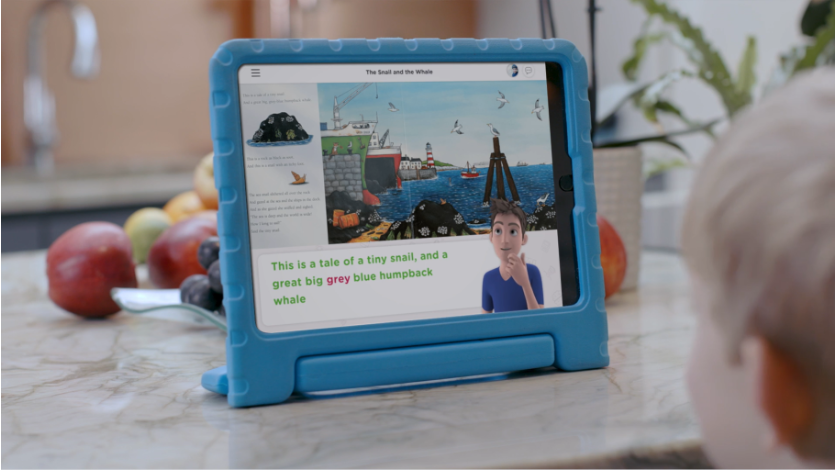A Virtual AI Buddy Helps Kids Learn to Read

(3 min read)
Children who are unable to go to school need digital learning aids and lots of self-motivation. With AI technology we can support them and their parents as well: The AI Learning Helper teaches elementary school children how to read aloud in English and understand stories.

There are many reasons why children do not go to school, from physical and mental disabilities or temporary illness to an active choice on the part of their parents. Home schooling has also become hugely more commonplace as a result of the COVID-19 pandemic. But learning from home is not easy: Children miss participating in lessons with their friends, feel less motivated, and are more easily distracted. That’s why our innovation team has developed an approach to mitigate the problem: the AI Learning Helper. In this application we combine state-of-the-art AI technology with a user interface that is designed for elementary school children. It helps them learn how to read in English, providing targeted support as a virtual teacher.
Valuable Cooperation with MIT Media Lab and NTT Boston
Regarding its scope of services, the solution was anything but trivial. Our virtual buddy can recognize gestures and body language, provide emotional feedback, analyze pronunciation phonetically, summarize content, generate questions and answers based on a text, and recognize image objects. To accomplish this, we cooperated with the renowned MIT Media Lab and the NTT Boston Exponential Hub, both of which provided valuable input for the project. Hardly surprising that the AI Learning Helper has also established itself as a ground-breaking project in NTT DATA’s global CTO circle, because the underlying technology can be easily transferred to other business applications.
it.human Platform – One Foundation for Many Use Cases

The foundation has been developed over recent years and tested in various scenarios. Our “digital human platform” allows us to create human avatars that act in real time. In addition to the new AI teacher, we have already used the platform to develop shop floor assistants, tour guides, a digital switchboard, and the Kia Mia virtual car salesperson. But there was no shortage of technical challenges to solve, particularly in the field of speech recognition. For other parts of the App, we also had to use AI language models like GPT-2 and GPT-3 from the OpenAI initiative. The top level of its neural network is trained with domain-specific data – in this case, children’s books. The AI has read around 300 billion lines of text and can analyze 175 billion parameters. As recently as two years ago, the AI Learning Helper would not have been technically possible.
International Teamwork within NTT DATA
The project also relied heavily on a cooperation within NTT DATA. Our team included three specialists from the UK, three from Romania, a colleague from Australia, and five experts from Denmark. Some took care of customer experience and user interfaces, while others used their edge computing expertise to solve issues with the audio input. Nevertheless, the AI Learning Helper is not designed as a replacement for human care and attention, but it can certainly provide valuable support in difficult times.
The AI Learning Helper – Benefits
-

Child Using Our AI Learning Helper to Learn to Read The AI Learning Helper was recently made available as a minimum viable product and is now being tested and optimized. Considering the effort and IT challenges involved, the project timeframe has been extremely short. The reason we have made so much progress is because we can implement solutions quickly with an agnostic approach and the resources of the NTT DATA group.
- The AI Learning Helper is the epicenter of a learning universe comprising books and illustrations. It can be personalized and – unlike traditional learning apps – can respond to the child’s actions, emotions, and individual progress in real time. Reading a text involves decoding (pronunciation/phonics) and comprehension (understanding/description/vocabulary).
- In addition to supporting a traditional learning strategy, the system can adapt to particular conditions: When it notices that the child is distracted or demotivated, it changes position and reads aloud itself or engages in small talk. This approach was developed during the project in response to extensive discussions with children, teachers and parents as a way of reintegrating the child into the learning flow.
You would like to get further information on the AI learning Helper?